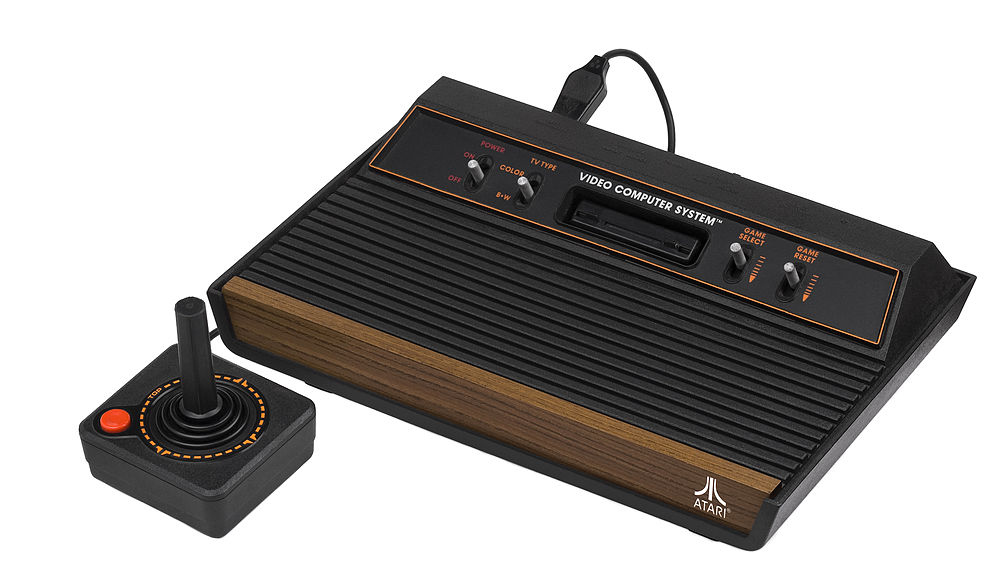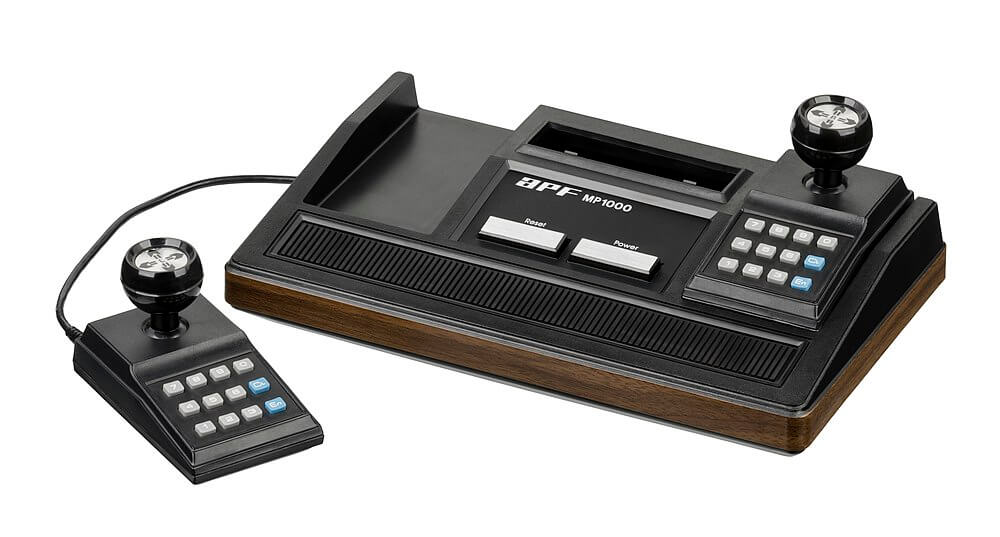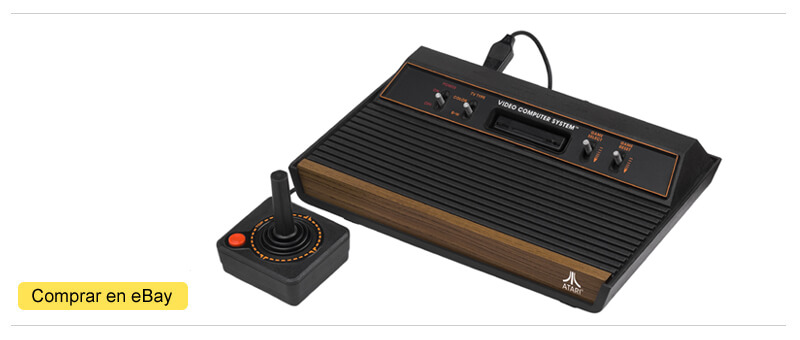We are facing one of the longest generations in the history of consoles, emerged just 4 years after the launch of the first console in history, the second generation of consoles has great consoles and a great exponent, the Atari 2600, main cause of extending the useful life of this generation until well into the 90’s.
START DATE: 1976
FIRST CONSOLE: Fairchild Channel F
- Consoles of the second generation in Infoconsolas.
- The second generation of consoles, background.
- The second generation of consoles, course.
- The second generation of consoles, legacy and consequences.
- The public of the second generation of consoles.
- The games of the second generation.
- Collect second generation consoles.
- Buy consoles of the second generation.
- FAQ second generation of consoles.
Consoles of the second generation in Infoconsolas.
Below we show you the consoles that we have analyzed at Infoconsolas over the years. Little by little we will update and improve the content.
The second generation of consoles, background.
Previously, we have seen how the first generation of consoles had hardly any references to lean on, inventing a new industry and entertainment from scratch. In this case, barely 4 years after the launch of the Magnavox Odyssey, the situation was very different:
Dedicated Pong-like consoles had conquered the world to the point of crashing the market. If you liked video games, the offer of consoles was immense, yes, incredibly similar. This fact caused that in the homes the interest in this first batch of consoles was lost, some coming to assure or prophesy that this video game thing was a passing hobby. Nothing is further from reality.
It is true that there was a notable stagnation in terms of first-generation consoles, some innovative Marnavox Odyssey and Atari Pong, joined by hundreds of clones and variants that contributed little more to each other. But meanwhile, video games were experiencing their moment of glory with arcade machines: Dozens of companies signed up for the succulent arcade, coin up or arcade business (choose the name you like the most), but the point is that every month they came out new games that innovated in genre and technology. Undoubtedly, we owe this unprecedented success to Atari, a company that was the first to exploit a business model that would quickly be copied by many other companies: Dedicated systems that were cheaper than the computers of the time, housed in wooden cabinets and offering run software for a few cents… What has been an arcade game of a lifetime.
Atari were not the first, but they were the visionaries who bet on a new entertainment, market and industry. In this way, while good parents bought their Pong-type consoles to enjoy with their relatives in their living room on Saturday afternoons, teenagers from all over the world (especially from the United States and later Japan), were left their paychecks every afternoon in bars or dark clubs called arcades, while they enjoyed and -damn they envy- they discovered new genres that would mark the evolution and history of video games… Why yes guys, being young is very fine, but sometimes one has healthy envy of those pioneers:
Imagine what it was like, with the only reference of Pong, that new games never seen before appeared every few weeks, that were copied by other companies becoming references and creating new video game genres (a genre is nothing more than copies derived from a original concept), think about what it was like to experiment with a virgin mind and the capacity for wonder raised to infinity, dozens and dozens of new games every year. Arcade games conquered the world parallel to consoles, but with much more success, offering a much more varied offer and turning a whole generation of young people and adolescents into true addicts to this new entertainment that was video games.
To give you an idea of what is described in the previous paragraph, Atari had a habit of not repeating the genre, that is, if they made a racing or soccer game, they could not repeat a concept. It was an unwritten law that forced them to look for originality against their competitors. And to end this topic, it was only in 1976 that the Moto-Cross (Sega), Night Driver and Break Out (Atari) and Death Race (Exidy) arcade machines were released.
Given this scenario, dedicated Pong-type consoles quickly became outdated, increasing market demand for more developed games, as was the case with arcade games. The germ of the second generation of consoles was born.
If someone asks where the computers were at the beginning of the 70’s, the answer is that their high cost made their acquisition impossible for an average family, hence the consoles, dedicated systems with fewer components, much more cheap. His time had not yet come.
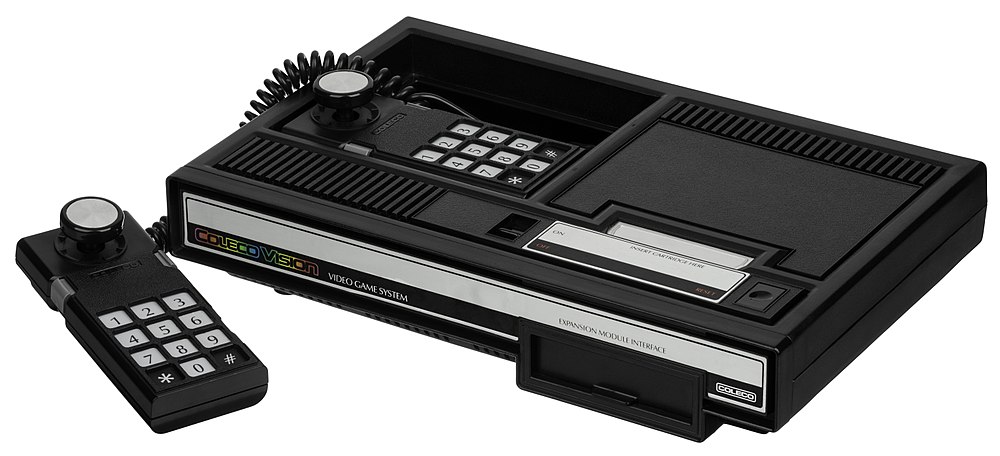
The 2nd generation of consoles, laying the foundations of the video game industry.
As we have seen, the second generation arises from a need or demand on the part of the market, given all the offer that the arcades offered at that time, hand in hand with an evolution of technology (how could it be otherwise): A Unlike the consoles of the first generation, in the second generation two key elements appear and are consolidated: The CPU and the cartridges.
These two elements turned these consoles into much more developed machines with more power and possibilities. From consoles with chips dedicated to variants of Pong, it went to a basic architecture, with ROM cartridges in which the software came. The video game industry thus opened up a new market linked to that of consoles, that of video games. It is difficult to get used to the idea of the change that this meant, but let us think that suddenly, in the toy store chains where video consoles were sold, the representatives of these new machines had to convince the owners why their new console without games was better in memory, that one with 18 built-in pong games, and that now he would have to explain to his clients that, in addition to the console, he should go through the new cartridge section so that he could play something… Not easy for the pioneers.
The first console to combine these two new elements was the Fairchild Channel F, with its 8-bit Fairchild F8 microprocessor (CPU) and its corresponding cartridges. The console was launched in 1976 initially for US$170, the equivalent of US$765 in 2020, not a cheap toy. A true pioneer who succumbed to the launch of the well-known Atari 2600, a console known to all. At a time when Atari was at the top, there was no company on the market that could compete with them, theirs was Atario Pong and all its variants and theirs were the most successful arcade games of the moment. Atari was an empire paraded by the best programmers of the time. The Atari 2600 established a hobby and increased the market exponentially.
Subsequently, new companies such as MB or Coleco entered the market trying to take their share of the cake, many of them offered systems that were far superior to the Atari console, but as they were very expensive systems, the fact that they offered graphic improvement was not reason enough to pay the equivalent of more than half a salary, for a console of the same generation. Despite having good sales, technically superior consoles such as the Vectrex, ColecoVision or Intellivision never really competed with the Atari 2600. Obviously, many other proposals fell by the wayside.
An extremely distinctive fact of this generation, and that shows us how in those years there was no route or path to follow, but that it was the companies themselves who built the foundations of video games day by day, was the appearance of multiple peripherals for transform our consoles (acting as CPUs), into shiny new computers. Yes, computers, in a time when computer equipment was an investment equivalent to buying a car, consoles were presented as devices capable of becoming a home computer at a much lower price. The creation of modules, cassettes and keyboards skyrocketed and many systems enjoyed this possibility.
But unfortunately, all these modules and new consoles that promised to cover all the leisure and work needs of our homes, were quickly outdated by a new contender: Microcomputers, cheap computers that could run hundreds of games in a much cheaper format and that , now yes, they were real computers.
Microcomputers coexisted for some years with the second generation consoles since their appearance in 1981, the Spectrum 16k launched in 1982 being a great example. financially considerable investment, a father of a family had to choose between an Atari 2600 that was only used to play, or a Spectrum 16k with which he could play, keep accounts, look at recipes and learn to program (or all this said the advertising). As is normal, many householders opted for the second option, the factor of the immediacy of the cartridge was not enough when, in addition, the cartridges were much more expensive than the tapes (and could not be copied).
As if the arrival of microcomputers was not enough, just as it happened with the first generation in the world of consoles, a great crisis was brewing. A multitude of mutually incompatible systems were led by an Atari 2600 that lacked minimum quality standards when it came to launching or licensing its video games. Specific release dates, such as Christmas campaigns or movie premieres, prevailed over development times, this, together with a lack of quality control by third-party companies, caused a large number of video games of disastrous quality to come out, which They did nothing more than provoke the indignation of buyers in a few years in which games were bought for their covers in many cases. Every company wanted a piece of the Atari pie, but not all of them were in a position to deliver good products.
This explosive combination formed by a wide range of video games and systems, loss of confidence on the part of users in the face of numerous games of poor quality and competition with personal computers, resulted in the well-known Crash of ’83. The image of video game consoles changed, they went from being seen as high-tech family entertainment and social status, to a disappointment and a waste of time for our children, who undoubtedly had better things to do.
The Crash of ’83 was one of the hardest hits for the video game industry and the hobby itself, many distributors and toy stores stopped being interested in video game consoles, their image was disastrous, an article for the irresponsible. The second generation consoles were not able to cope with this debacle and most ceased their distribution in 1983 or 1984. It was a true extinction of systems. But as you all know…
It exceeded. Video games and especially video game consoles went ahead with the arrival of the third generation of consoles and much more intelligent market practices and strategies, which are largely preserved today. Nintendo’s NES and its Seal of Quality, coupled with the educational approach of its ROB, saved video games in the United States, but we’ll leave that for another time… Still, consoles like the Atari 2600 remained active for many more years until well into the 90’s, thanks to the incredible user base, with some 30 million consoles sold, proving once again why she was the queen of her generation.
For those of us who were too young to enjoy that generation, or were not directly born, there is a generational barrier that makes it very difficult for us to appreciate what those consoles offered. Make no mistake, the fault is ours, the second generation had incredible consoles like the Microvision, the first portable in history, or the Vectrex with its vector graphics or the first 16-bit console, the Intellivision and its games perfectly comparable to those early NES games. If we don’t appreciate the graphics of an Atari 2600, it’s because we started with more advanced systems and also lack the nostalgia factor. I repeat, if we don’t know how to value them, the fault is ours that we are not able to put ourselves in a situation and analyze them in relation to quality/time.
The second generation of consoles has a lot to offer us without a doubt, they were frantic years for all those players who enjoyed them in the first person. The combo of arcades and consoles is something that I deeply miss, and in those years it was the order of the day with continuous conversions from arcades to home consoles. But as we have already mentioned, the Crash of 83′ caused an entire generation of consoles to rush into oblivion.

The 2nd gen. of consoles, legacy and consequences
After a first generation represented by consoles dedicated to Pong, the second generation laid the foundations for video games as we know them today. Consoles with an architecture based on 8-bit CPUs and memory, popularized and consolidated the use of ROM cartridges, one of the best formats that video games have had.
The ROM cartridge was expensive to produce, but its benefits made it worthwhile compared to other magnetic formats such as disks or tapes: They could not be pirated, they could be loaded immediately, and the ROM memory could be larger or smaller to reduce costs. For many of us, this is the quintessential video game format.
The innovation in this generation was far above that of subsequent generations. With the technology of the late 70’s, for example, the first laptops in history were launched. Forget the Game Boy or Atari Lynx, and go crazy with the MicroVision, Entex Select-A-Game or Adventure Vision, consoles that were ahead of their time by almost a decade. The revolution of the controls also arises from this generation, welcoming the joystick among many others.
The Atari 2600 became an icon capable of bringing the magic of arcade games like the Pac-Man phenomenon to our homes, a craze that never stopped growing with Centipede, Asteroids, Space Invaders, Pitfall… It wasn’t the most powerful, but it was the Atari console in the best years of Atari, when they released the best arcade games, and that was a great asset that acted like a steamroller against the competition. If you were a developer and you wanted to make money, you had to publish your games on the consoles that everyone else had. The second generation of consoles has left us its greatest representative, an icon and a benchmark in the history of consoles, the Atari 2600, the console that conquered the world and helped spread our hobby, video games, all over the world. .
The second generation of consoles also taught us a valuable lesson with the Crash of ’83, there is not room for everyone in the video game industry, neither hardware nor software. From having dozens of consoles, the Crash of ’83 liquidated the vast majority of the supply, forcing them to control the quality of their products, something from which we users would be the greatest beneficiaries.
And to put an end to the consequences of the 2nd Generation of video game consoles, with the Crash of 83′ and the decline of the second generation in pursuit of the third led by Nintendo’s NES/Famicom, we were able to witness how the axis of the video games moved from west to east, from North America who had been the inventors and undisputed leaders to Japan, a society that had adopted video games from the very beginning, importing arcade games and licensing products and consoles, for a very short period of time, move on to become self-sufficient manufacturers and developers as we all know today
North America would never recover from this hard blow, the axis of video games would never return to its borders and Japan would go from being self-sufficient to becoming the largest consumer and exporter of the video game industry. It is true that Europe played a very important role in the first decades of video games, but when it comes to consoles, Japan from 1983 would conquer the world, leaving consoles made in Europe without any chance of succeeding in a market increasingly globalized.
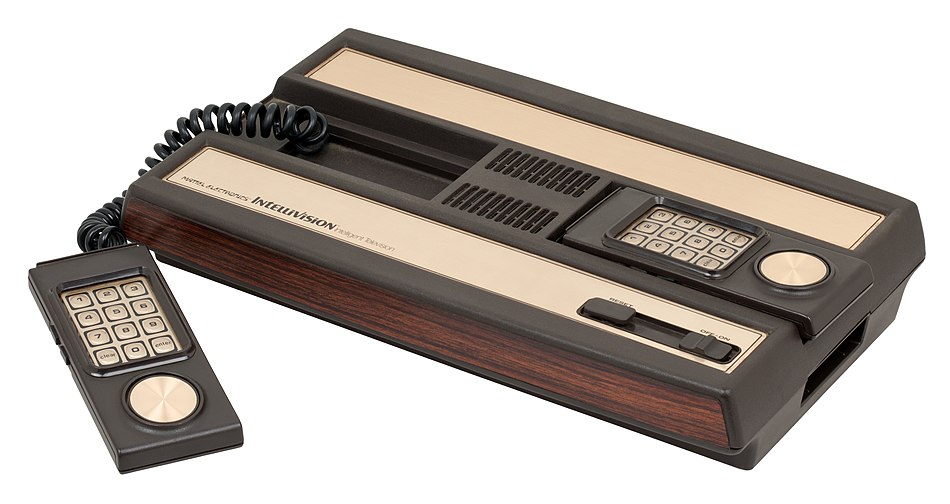
The public of the second generation of consoles
At the end of the 70’s, video games were still considered a hobby for children and adolescents, in fact, they were sold in the toy sections of department stores or toy chain stores. Even though they were played by an adult audience as well, most console purchases were justified by the minors in the household, who had no income and were completely dependent, although owning a console was also a matter of social status.
Faced with some devices that mostly cost a monthly salary of a middle-class worker (in some releases), this meant that once they gave you a console, that was going to be your console for the next 5 years. As video games are focused on a mostly child audience, there was a huge abandonment of the hobby by all those young people who were growing up, and they could not find any product focused on their adult age range. Yes, games were for children in those years, much more on consoles, systems that depended on the purchase of software by an adult (parents) who were looking for all-purpose games for their children.
It is true that in arcades it was possible to lengthen the age of young fans, but outside these video game temples it was difficult to find video games for an adult audience (which there were).
On the other hand, as we have already mentioned, there was a coexistence with the first 8-bit microcomputers, so the world of video games was divided for the first time between supporters of computers and those of consoles. An eternal war that resurfaces from time to time.
The games of the 2nd generation
The second generation of video game consoles has one of the most extensive catalogs of all generations. Since there were dozens of consoles that were active, and the facilities (or lack of requirements) when launching games for consoles such as the Atari 2600, there are thousands of games, many of them very little known as they are programmed for systems that they barely had 1 or 2 years of commercial life.
Now, in this section we are going to carry out an act of responsibility and we are going to dignify an entire generation for its most representative games, authentic references and pioneers in their genres, many of them conversions of the jewels they enjoyed at the end of the 70’s. and early 80’s, which can stand up to any commercial “must have” of today:
Pong, Asteroids, Centipede, Missile Command, Breakout, Defender, Tempest, Space Invaders, Frogger, Pitfall!, Pole Position, Robotron: 2084, Realsports Tennis, Video Pinball, Boxing, Ballblazer, Pac-Man,Galaxian, Dig-Dug, Donkey Kong, Star Wars: The arcade game, Star Trek, Mario Bros, Yars’ Revenge…
They are all authentic great games for their time, cornerstones of their genre which in many cases created history in the form of cartridges written on the basis of ones and zeros. To the youngest of the place, they will be simple in their mechanics and poor at a technical level, but they are the base, the foundation of everything you play today, and for their time, they were 100 out of 100.
We are talking about games that literally broke the barrier of languages, continents, cultures and societies. Space Invaders was played in both Japan and New York, Donkey Kong launched Nintendo to stardom… on other systems. Pitfall! Stunning the world and opening the minds of programmers, Pac-Man became the best-selling game for many years and an icon of a hobby, an industry, and a generation. As you can see, the video games of the second generation are much more than they seem.
Collect second generation consoles
Do you collect consoles and doubt if you should have 2nd generation consoles? Yes, you should. Spot.
It’s that simple, at Infoconsolas we believe that any self-respecting collector or lover of retro video games should have a representation of this generation. And luckily, it’s pretty easy these days due to the sheer number of consoles and games being sold.
It is true that there are consoles that are very difficult to find, authentic rarities such as the Bally Astrocade or Vectrex, but if what we are looking for is to start in those wonderful years, an Atari 2600 will perfectly meet your expectations and the minimum that any collection of consoles from self-respecting video game should have.
Now, if your collection is already advanced and you are looking for certain rarities, there is nothing left but patience, time and money. We are talking about consoles from more than 40 years ago, devices that have mostly been destroyed or recycled, due to the little value that people have given them for many years until the Retro trend spread. Consequently, if years ago we could find consoles of this type extremely cheap and with a certain frequency, since they were mainly sold by people who only wanted to get rid of objects that they no longer used, that time has long passed, being in the present these consoles highly valued and being, depending on what we are looking for, consoles very difficult to see.
From Infoconsolas, a website created by collectors, we can only encourage you so that little by little, among all retro lovers, we acquire and preserve these authentic video game museum pieces. Without a doubt they deserve it.
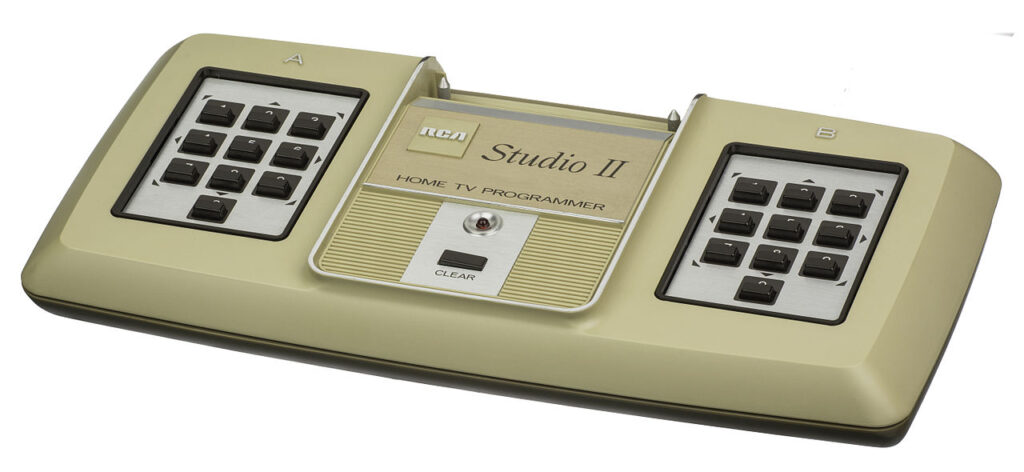
Buy consoles of the second generation
As we have already mentioned, buying the most popular 2nd generation consoles is something that anyone can get for a fairly cheap price, as long as we are talking about the consoles without their original box and manuals, of course. For an acceptable amount of money, in a few months we can get hold of a good batch of different consoles, or rock the Atari 2600 and its best games. Here I leave a link to eBay where you can see the list of consoles for sale at the moment, with the price of the current Atari 2600.
For the lesser known or more exclusive consoles, we can prepare a good amount of money. Everyone who sells them knows exactly what they normally sell, so we can forget about bargains and bargains, we have to be patient, track the market and look for a good price. The harsh reality of collector.
As you already know, the best place to find this type of console is eBay, at least for all Western consoles, which are the majority of this generation, for Japanese rarities such as the MB Vectrex licensed to Bandai, you will have to go to specialized pages from Japanese collectors. Good luck if this is your case!
FAQ 2º generation of video game consoles
1976.
Fairchild Channel F.
170 dollars, a real outrage for the time.
In the United States of America.
The arcade machines.
Pacman, Asteroids, Donkey Kong, Pole Position… There are dozens of notable games that started new genres.
The Atari 2600, with 30 million consoles sold.
Atari.
The cartridge is imposed as a revolutionary format.
To the family, increasingly focused on child claims.
Yes.
Yes.
The Intellivision, 16 bit.
The ColecoVision.
Were there handheld consoles in the second generation of consoles?
Yes, being the first in history the MicroVision.
External sources and links
- Console graphics resources: https://commons.wikimedia.org/wiki/User:Evan-Amos

